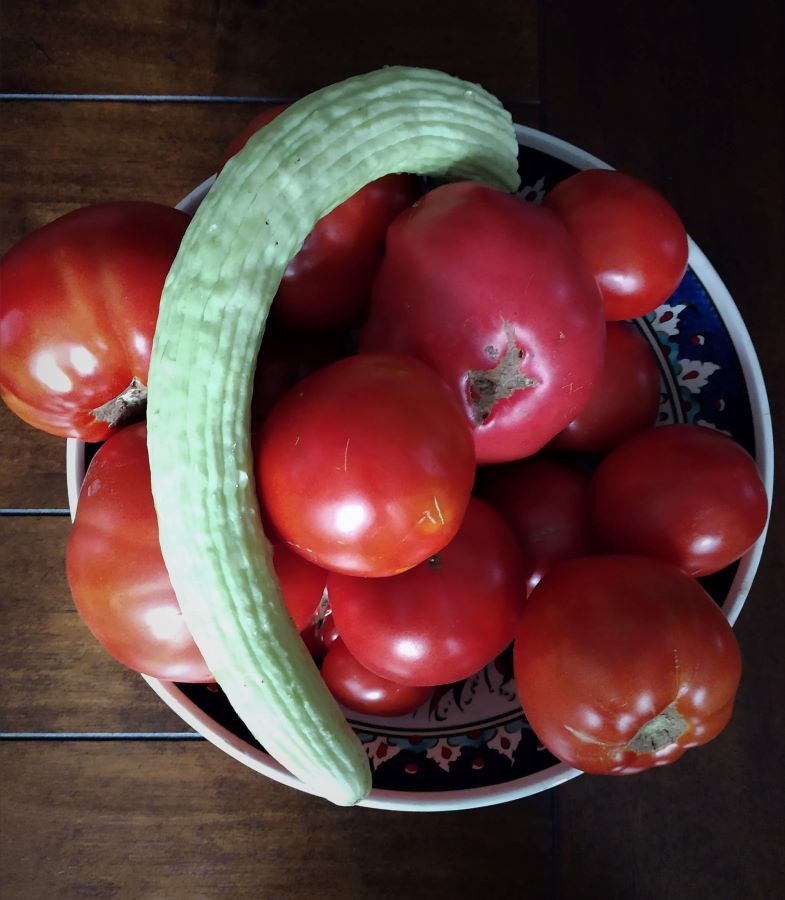
Rossitza Schroeder, our Woman of the Week, was nominated for the way she combines her work as professor of art history at St. Vladimir’s Seminary with that of being a professional gardener. You see her here with her mentor Dr. Annmarie Weyl Carr and at the Victoria and Albert Museum in London. She also wanted to give you a look at her Bulgarian peppers and her Bulgarian Damascus rose. We asked her to tell you how she got from where she started to where she is today:
“I have never been strictly goal-oriented and for this reason the fact that somehow I became a professor baffles me. I say this not because I am humble, but because my life circumstances and distinct lack of direction (in the way in which I have experienced it here in the US) do not naturally lead to a teaching position at a respectable institution of higher learning. And yet…
“I was born in a small village in northern Bulgaria and grew up with my grandmother amidst rows of flowers, vegetables, and all kinds of domestic birds. In my mind, I was clearly meant to be a village woman; I have a sturdy constitution and an attitude which would have aided me in living with the joys and miseries of the visceral aspects of country life. Somehow, my life took an unpredictable turn. I attended the University of Sofia, got a degree in history, and two years after graduating found myself on a flight to Dallas, Texas, to pursue an MA in art history at Southern Methodist University. The whole process of applying to SMU, passing the English proficiency exam, getting accepted, obtaining a US visa (this was in 1997 and very challenging), and receiving two grants from foundations in Bulgaria was close to miraculous. Now, hindsight 20/20, I can say that it was fated.
“Thanks to the patience and encouragement of my teacher, the beautiful and genteel Annemarie Weyl Carr, I fell in love with Byzantine art history. And that is how my journey started—after graduating from SMU, I pursued a doctorate and after that a teaching career. Frankly, it was toward the end of my doctoral studies when I had acquired the courage to actually finish my dissertation (for the longest time it was somewhat of an insurmountable task) that I realized I should be applying for jobs. This saga is not worth telling—eventually I ended up at the Graduate Theological Union in Berkeley where I received tenure and became also an active participant in the life of the Orthodox church.
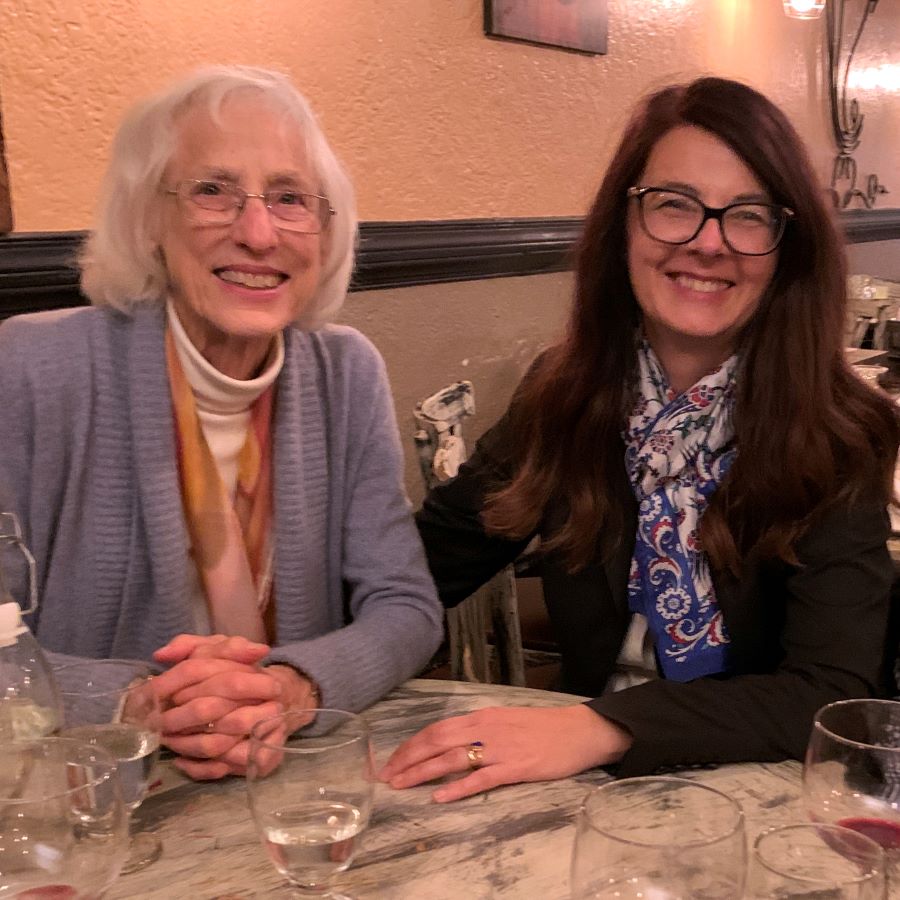
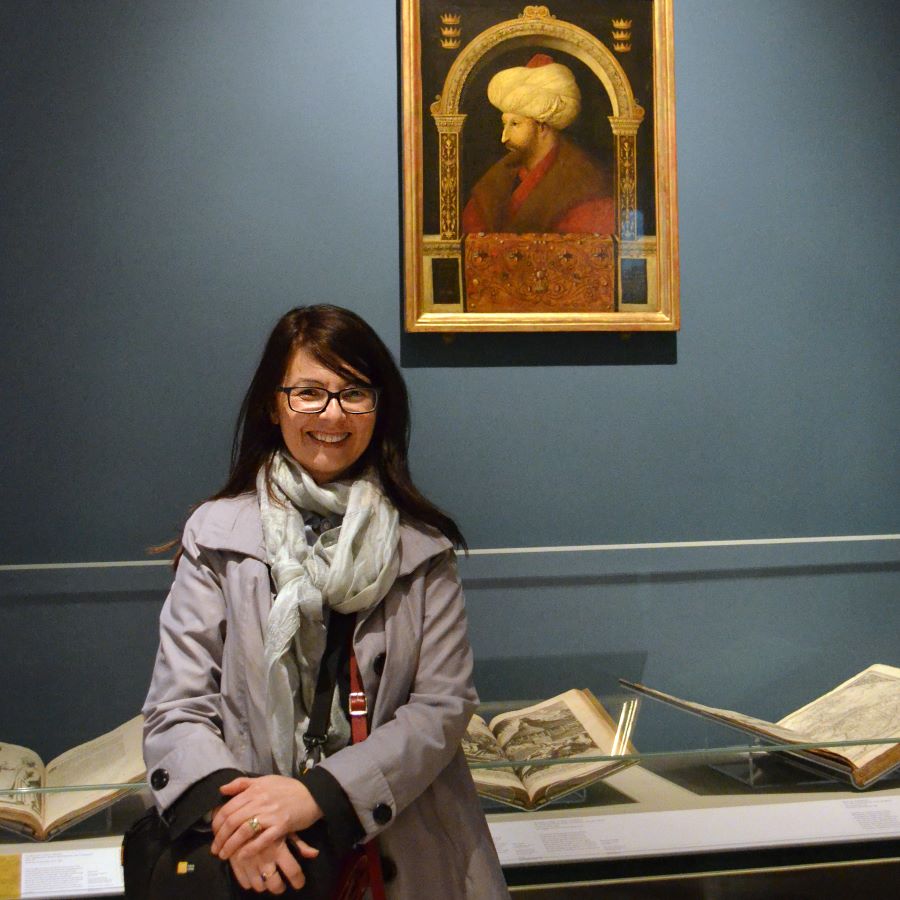
“On May 29th, 2019, 566 years after the fall of Constantinople to the Ottomans, I left my job and California for good. The date proved as faithful to me as it was for the Byzantines. That same day I flew to Istanbul to participate in a conference on the environment organized by the Ecumenical Patriarchate, and gave a talk on the symbolic value of the nature motifs in the decoration of Hagia Sophia. One thing led to another and one faithful day I received a message from St Vladimir’s academic dean—Dr. Alex Tudorie—inviting me to offer a course on the arts of the Orthodox Church. Apparently someone had recommended me to him after hearing my talk in Istanbul.
“This is my third season of teaching at the seminary. I teach online and travel to Yonkers once a semester for an onsite intensive week with the students. The community at St Vladimir’s has accepted me as one of their own; since the first time I visited, I’ve felt that this is the right place for me to practice my vocation. Amidst practitioners of the Orthodox faith, the material which I teach is more than a piece of beautiful history; rather, it is a living and life-giving tradition.
“In the same month when Dean Tudorie called me, I ‘discovered’ two volunteer tomatoes growing in the shade of our maple in the backyard. I took pity on them, dug them out and planted them in front of the house where they got more sun and eventually bore fruit. There was not enough time for them to ripen, but I saved a few cuttings to root and overwinter. And the rest is history. I became passionately involved in the lives of plants, so much so that I had the whole backyard dug out and planted with all kinds of vegetables, while reclaiming half of the front lawn for some temperamental roses (including an old Damascene variety which should be a bush but behaves instead as a giant climber), poppies that have no sense of boundaries, and bearded irises which slowly but systematically are taking over the space around them. I have given away tomato, zucchini, cucumber, and pepper seedlings to my neighbors and now there is a network of women with whom I share experiences and swap stories about plants. I even got a job at the local greenhouse, where I am learning how to care for vigorously growing annuals, hardy perennials and dainty and capricious houseplants.
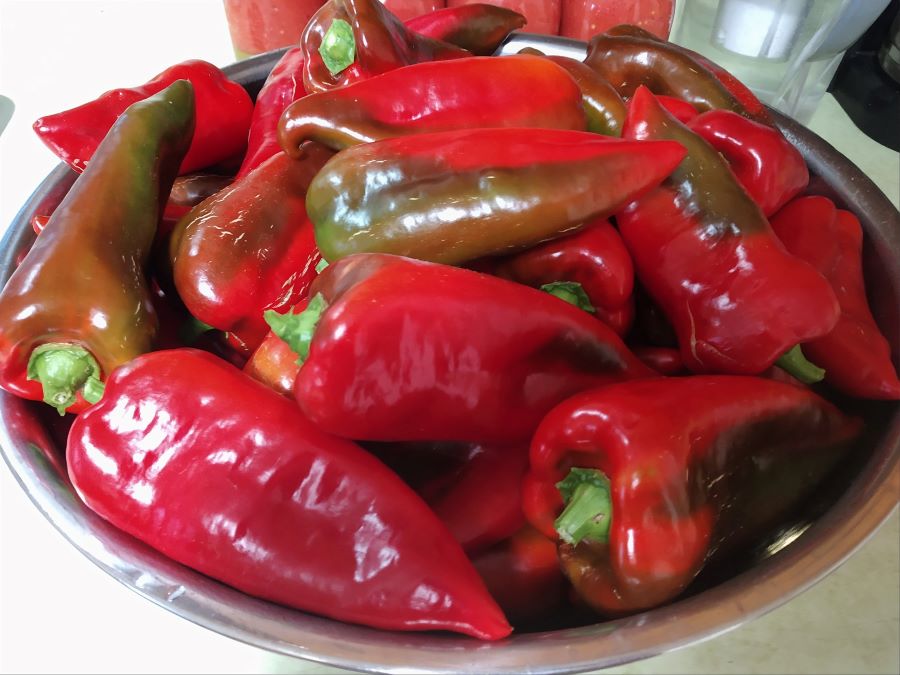
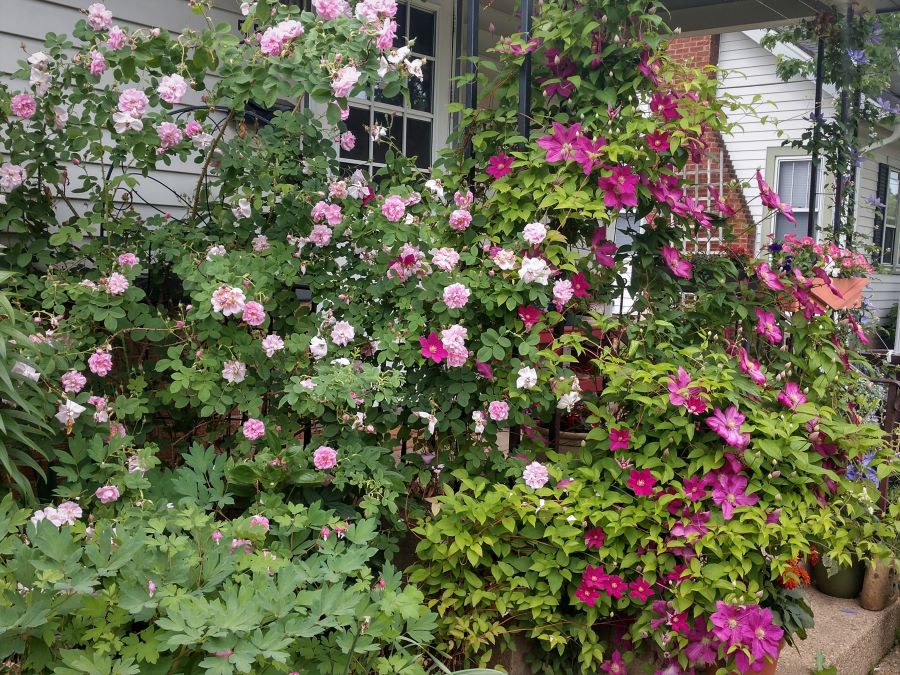
“I am hopeful that one day my two passions—Byzantine art and plants—will intersect. I have no idea when and how this will happen, but I have the sneaking suspicion that it will.”
Axia!
Our Woman of the Week is Rossitza Schroeder, nominated for the way she combines her work as professor of art history at St. Vladimir’s Seminary with being a professional gardener. You see her here at the Center for Arts and Religion in the Bay Area in 2017, and this is the 12th-century icon of the Theotokos from Mount Sinai that she refers to below. We asked her what she wants people to know about icons:
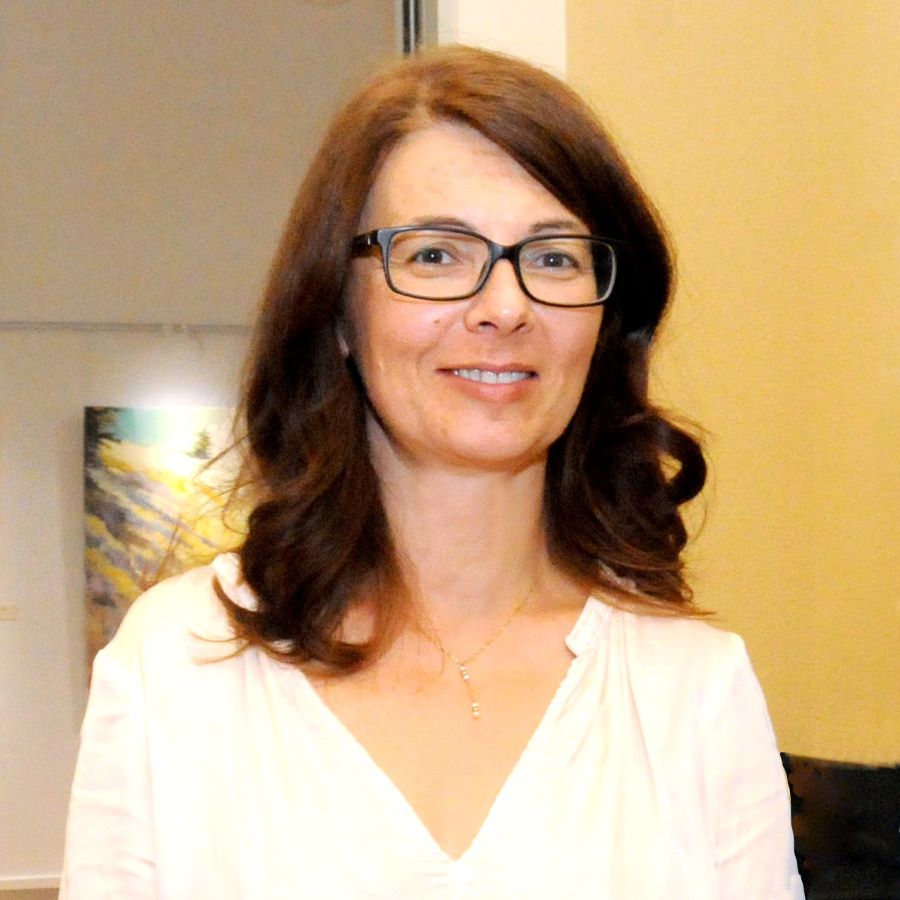
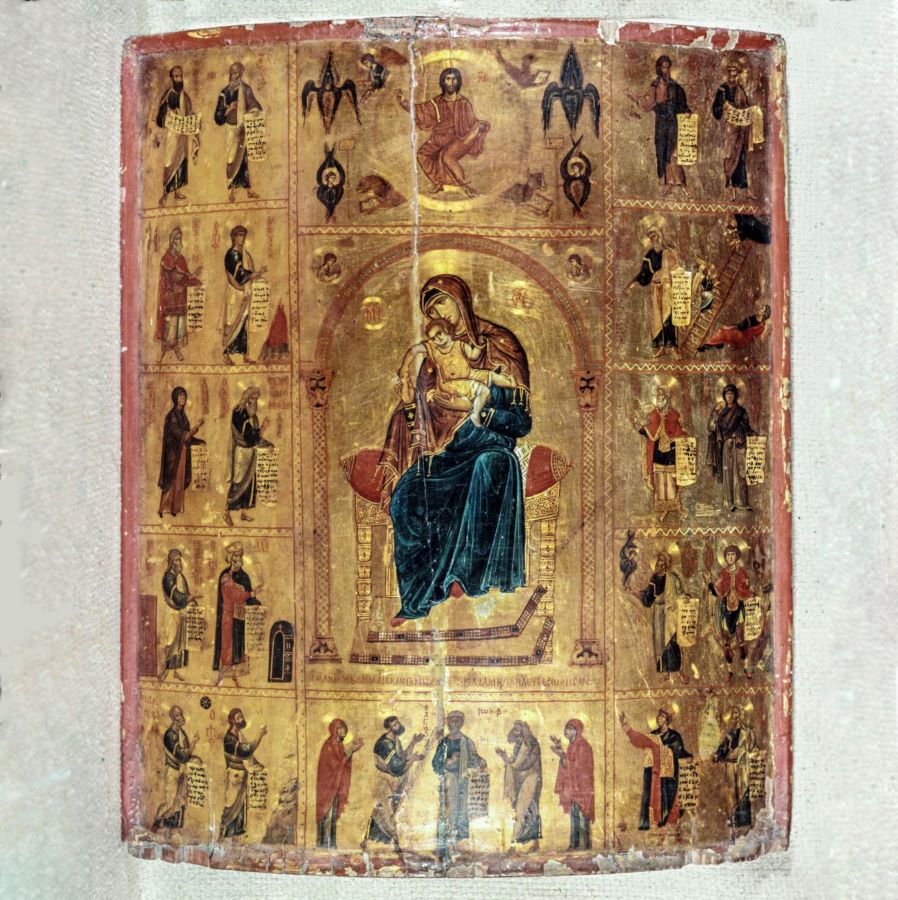
“My understanding about icons has been shaped by an article about a twelfth-century icon of Virgin Mary on Mount Sinai (you can see the icon here) by my beloved teacher, Annemarie Carr. In it she eloquently states: “That an icon should engage the viewer in this kind of kinetic and participatory contemplation challenges the characteristic metaphor in which the icon becomes ‘transparent’, ‘like a window’” and as a result “vanishes from view.” According to Dr Carr the icon “should be understood less as vanishing than as ceaselessly focusing and feeding the dynamism of the contemplative imagination.” I have nothing more to add to this profound observation about the ways in which we should approach icons not as windows, but rather as densely populated surfaces requiring intense concentration and deep humility before their holy capaciousness.”
As always, we asked Rossitza Schroeder, our Woman of the Week, about her morning routine. She is also sharing a photo of her prayer stand, a reflective photo herself with some gorgeous vestments in the St. Nicholas Museum in Perast, Montenegro; and a still life of tomatoes and an Armenian cucumber from her garden:
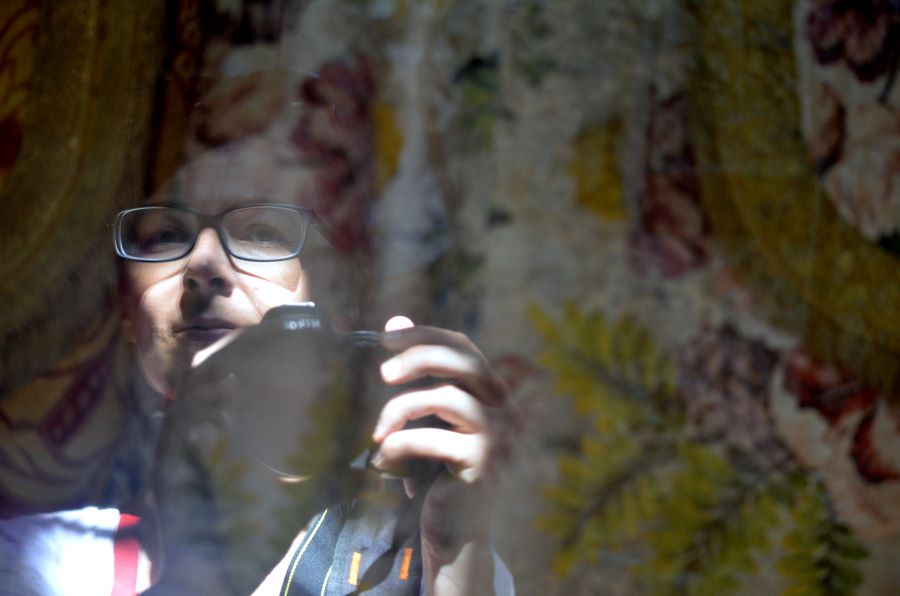
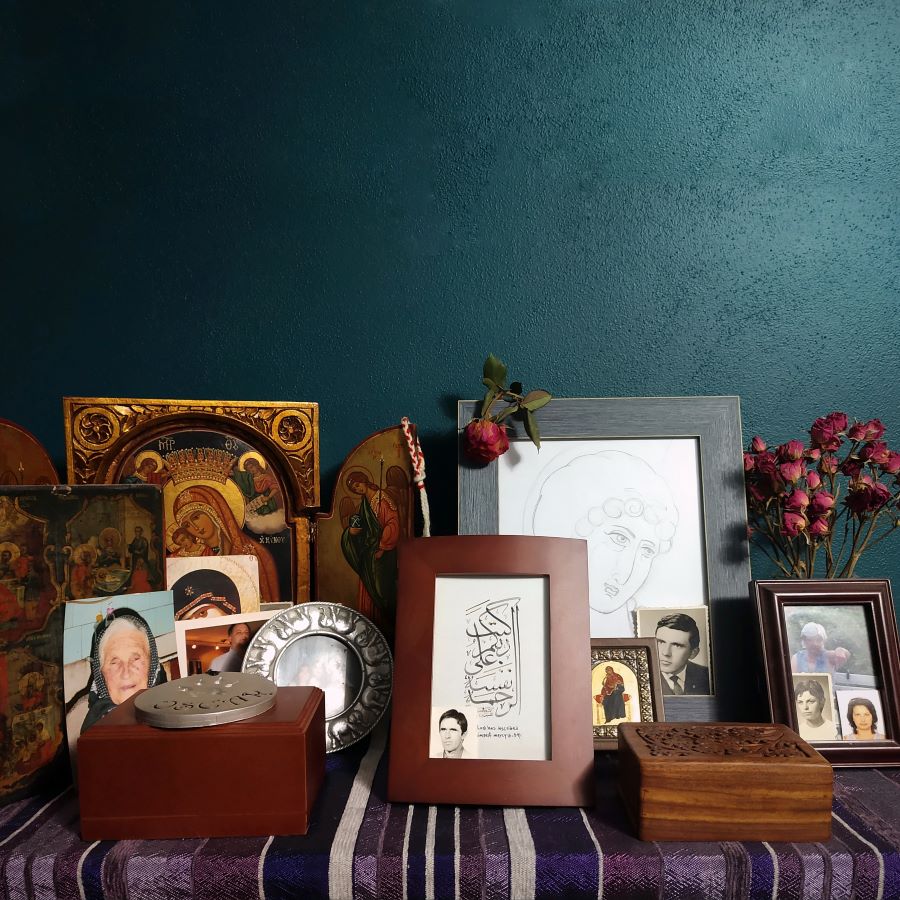
“I do not have a morning routine. The only thing that happens consistently is having coffee. The rest depends on the season and my work schedule. If it is summer, I go outside to weed and water. In the fall and winter, I check on my houseplants, read with the cats and write emails. Occasionally, I allow myself to daydream while watching the shadows of our lacy curtains on the wall across from the couch where I sit to enjoy my coffee.”
Thank you, Rossitza!
